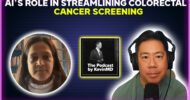by Brian McMichael, MD
The NEJM recently published an interesting case in the ongoing series: “ A Request for Retrieval of Oocytes from a 36-year old Woman with Anoxic Brain Injury.” Usually these cases are diagnostic dilemmas. This one focused on an ethical dilemma at end-of-life.
The Case
A 36-year-old woman, in overall good health taking oral contraceptive pills (OCPs), was on a prolonged international flight, and collapsed. A physician on the plane found no pulse. A 2-hour long, in-flight, complicated course of ACLS ensued with compromised ventilation, until the plane made an emergency landing in Boston. The patient presented to the MGH ED approximately 2.5 hours after her collapse, with unstable vital signs and arrhythmia. She was intubated with a Glasgow Coma Scale (GCS) of 9 with some lateralization, eyes roving, not tracking with disconjugate gaze, brain-stem and spinal reflexes intact. Her work up revealed right lower extremity DVT, with multiple bilateral pulmonary emboli and evidence of right-heart strain. Initial CT and MR neuroimaging was unremarkable. The patient was admitted to the ICU.
On day four, the patient’s pupils became fixed and dilated. Repeat CT and MR neuroimaging showed findings consistent with cerebral edema and widespread anoxic brain injury. Her increased intracranial pressure (ICP) aggressively managed. Sedation was withdrawn and she now demonstrated a GCS of 4 with intermittent posturing. EEG showed markedly reduced waveforms and diffuse slowing. Corneal and cough reflexes were intact, and remained intact throughout the following interludes, and until final disposition. So, the diagnosis of brain death was not made. After discussion with her husband and her parents about her dismal prognosis, the patient was extubated and placed on comfort measures only (CMO). Several hours later, in the middle of the night the family rescinded CMO and demanded full-code and maximal medical therapy be reinstituted to see if eggs could be harvested for posthumous conception.
There are several examples in the literature of maintaining maternal life support in the face of maternal neurologic catastrophe for the purpose of fetal survival, development and subsequent delivery. This was differentiated from pursuing perimortem gamete harvesting for posthumous conception. There have been cases reported for perimortem spermatocyte harvesting and subsequent posthumous in-vitro fertilization (IVF), implantation, gestation and delivery. This situation differed materially and would have required a 7- to 10-day controlled ovarian hyperstimulation protocol, oocyte harvesting in a dorsal lithotomy position risking harm or even death from increased ICP, oocyte cryopreservation, or IVF with cryopreservation of an embryo, gestational carrier identification, with subsequent surrogate implantation, gestation and delivery. No case of this scenario appeared in the literature.
The patient was taking OCPs for the primary purpose of contraception, with no current desire for children. The husband and family maintained that this course of action is what the patient would have wanted. Aside from the family’s assertions, there was no credible, objective evidence that the patient wanted children or would have consented to such a process. No willing gestational carrier was produced to take on such a pregnancy. The interventions were not offered. After further discussions with the family, CMO were again instituted, the patient was again extubated and died shortly thereafter.
Some Thoughts
Families stricken by lethal catastrophe frantically seek relief from their grief and naturally strive for redemption of their loss. These impulses and pressures are what can prolong a pursuit of curative treatments with vanishing likelihood of benefit, delay hospice enrollment, delay termination of life support, and they are what can lead to an exploration of and a decision for organ donation. Giving space to this grasping at straws, this searching for solace while balancing the care of patient can be heart-rending and frustrating.
I think this case also illustrates how the intersections of various, seemingly unrelated advances in medical technology can manifest in unexpected ways. Add to this the knowledge, assumptions, perceptions, attitudes and beliefs on the part of patients and their families and the resulting ethical and social interplay are difficult to anticipate, and as difficult to maneuver through.
I have struggled with families’ preferences, recommendations and beliefs based on information, recollection and impressions from websites, traditional journalism, TV, radio and interpersonal anecdote. I have been blindsided when unproven, fanciful, risky or even dangerous treatments and procedures, which are presented with enthusiasm and the assumption that they should be really no big deal. I have then been saddled with disappointment, distrust and anger, when these options are then ruled out by the team. Gentle, progressive, even if need be persistent education and discussion about the rationale for refusal seem often to go only so far with many.
It would be interesting to find out how family members recall and reflect on these complex loss experiences over time, how they perceive the situation, the support and care they received, and their grief process. More objectively, what practices best care for the dying and protect the living in the face of extraordinary loss.
Any insights about this case, or the general phenomena?
Brian McMichael is a physical medicine and rehabilitation physician who blogs at Pallimed.
Submit a guest post and be heard.

















![Working patients and health care [PODCAST]](https://www.kevinmd.com/wp-content/uploads/Working-patients-and-health-care-190x100.jpg)

![AI’s role in simplifying communication [PODCAST]](https://www.kevinmd.com/wp-content/uploads/AIs-role-in-simplifying-communication-190x100.jpg)

